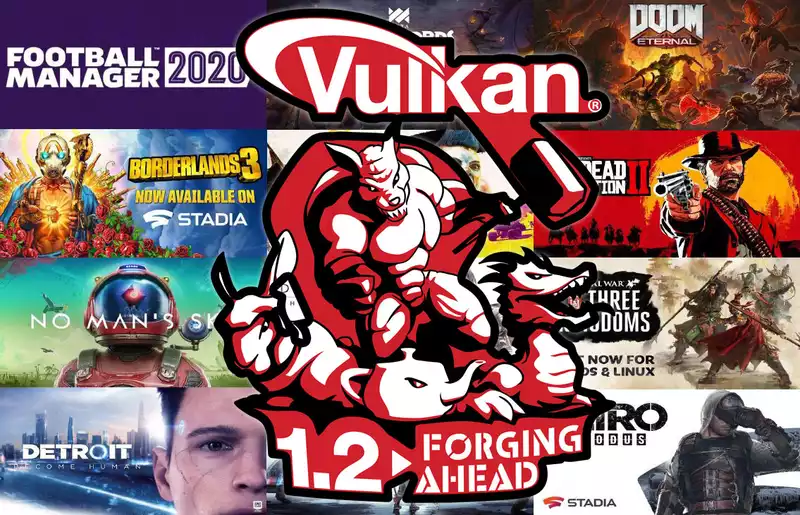Certainly, the development of low-level graphics APIs is not a sexy topic for the average user, including some enthusiastic gamers, but it is an equally important one. These APIs allow developers to make better use of the GPU and get the maximum performance possible. They also allow them to create cleaner graphics. It is therefore noteworthy that the Khronos Group has officially introduced Vulkan 1.2. This is the latest major update to the open source, royalty-free graphics and compute API.
Vulkan 1.2 comes nearly two years after the release of Vulkan 1.1, the last major update to introduce multi-GPU support There are no notable features associated with Vulkan 1.2. Instead, it is a compilation of 23 extensions released over the past few years, now neatly bundled into the core API specification.
The Khronos Group might disagree with my assessment of the lack of standout features and point to Timeline Semaphore as one example. Fair enough, as long as the developer knows what it is. If you want to get to the heart of timeline semaphores, the Khronos Group addresses the topic in a blog post.
"While there are still some inconvenient limitations in the API, the timeline semaphore programming model should significantly reduce the need for host-side synchronization and the number of synchronization objects that Vulkan applications need to track, thereby reducing host-side stall and application complexity, which in turn should improve performance and quality. Therefore, the Vulkan Working Group strongly recommends that all developers switch to timeline semaphores for all coarse-grained synchronization purposes," explains the Khronos Group. [and the Khronos Group explains that our friends at AnandTech have provided a slightly more straightforward explanation. In short, timeline semaphores are really important because they provide a way to control access to shared resources and synchronize data across devices. In short, they make programmers' lives easier on multi-threaded workloads.
Perhaps a little more interesting is the addition of support for HLSL, Microsoft's shader language used in its own DirectX API. The Khronos Group has its own shader language called GLSL, but the addition of full HLSL The addition of full HLSL support is significant. It will make it easier for developers to code Vulkan games and port DX12 games without having to rewrite large amounts of code.
Any GPU that supports previous versions of Vulkan can support Vulkan 1.2. And five GPU vendors, including AMD, Intel, and Nvidia, have already passed conformance testing of their Vulkan 1.2 implementations. Taking it a step further, Nvidia has even released a beta GeForce 441.99 developer driver that supports Vulkan 1.2. AMD, meanwhile, plans to provide drivers supporting Vulkan 1.2 for its Radeon 5000 series in the near future, saying the latest specification will help "provide a richer graphics experience for end users."


Comments